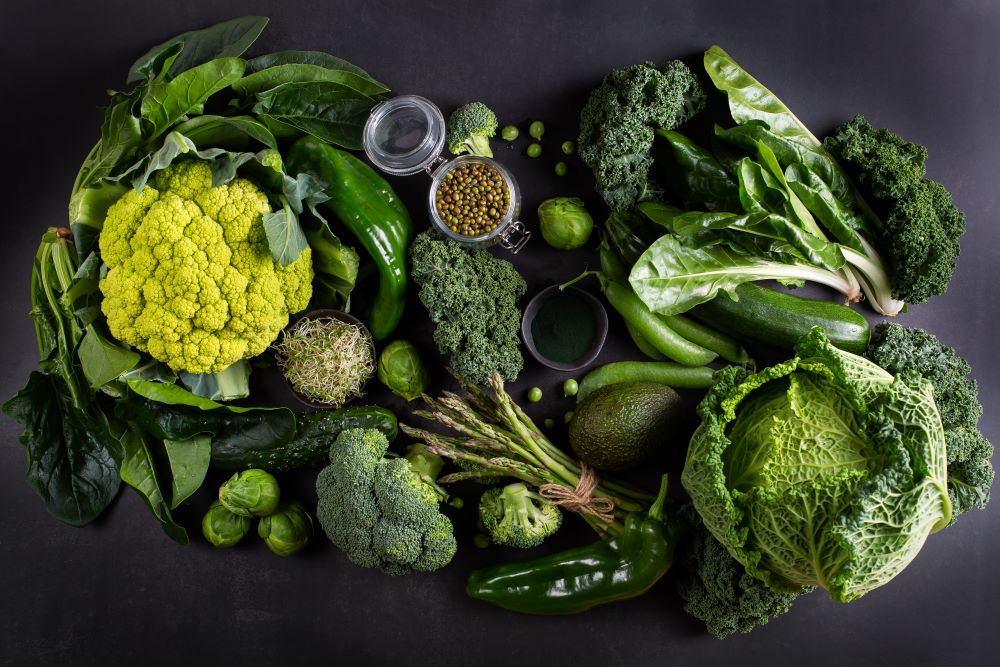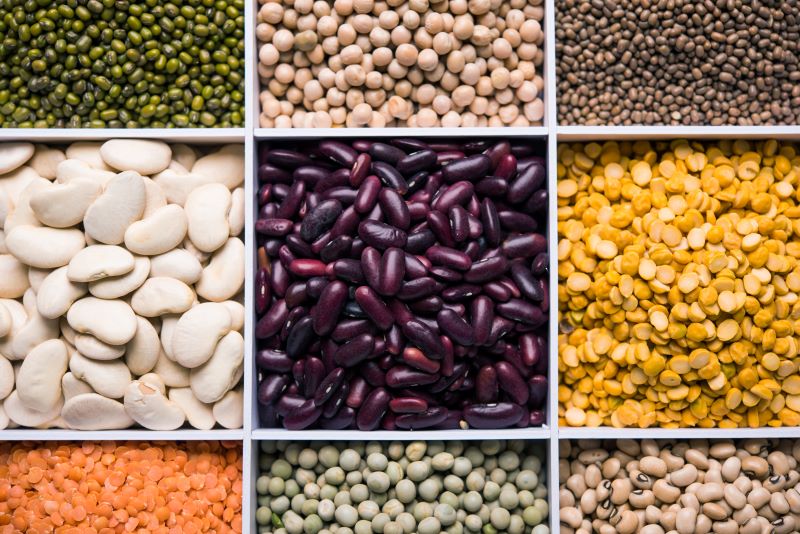40 Best Foods for Arthritis for Faster Recovery

Arthritis, a condition causing inflammation and discomfort in the joints, can interfere with daily life. Foods for arthritis especially come with anti-inflammatory properties and necessary nutrients that can help manage symptoms and speed up healing.
Try different nutrient-rich options, such as dark leafy greens, berries, fatty fish, or nuts, which promote joint health and overall vitality.

Table of Contents

What is Arthritis?
Arthritis is characterised by inflammation and stiffness in one or more joints. This condition is considered to be common if it results in pain, swelling, and limited movement around the affected area. Arthritis can present itself in over 100 forms, the most widespread being osteoarthritis and rheumatoid arthritis.
The latter occurs when an individual’s immune system mistakenly attacks healthy cells within their body, causing chronic inflammation of synovial linings throughout joints. At the same time, the former usually arises due to natural degeneration processes associated with ageing or injury.
40 Best Foods for Arthritis
Though challenging at times, there is always something we can do about our eating habits, especially when dealing with chronic illnesses like arthritis, where every bite counts towards healing the body from within.
Calcium is an essential nutrient for bone health. Getting enough calcium is key to preventing disorders like arthritis or osteoporosis and improving the quality of bones overall.
Here is the list of food items for arthritic patients, along with their nutritional quantities of calcium and omega 3, which ultimately help reduce symptoms and lead better lives.
List of Calcium Rich Vegetables for Arthritis

Adding colour to your plate with vegetables can supply essential nutrients that help reduce inflammation and promote joint health. Giving yourself a wider selection of veggies in every meal is one way to manage arthritis better and improve overall joint function.
SNo. |
Vegetable | Description | Calcium Content (Per 100 grams) |
| 1 | Root Vegetables | High in antioxidants, fibre, and anti-inflammatory properties. It helps to reduce arthritis symptoms. Examples: Carrots, Sweet Potatoes, Beets | Calcium: 33 mg, Omega-3: 0.1 g |
| 2 | Cruciferous Vegetables | Rich in vitamins C and K, antioxidants, and sulforaphane. Supports joint health and may reduce inflammation. Examples: Broccoli, Brussels Sprouts, Cauliflower | Calcium: 47 mg, Omega-3: 0.1 g |
| 3 | Leafy Green Vegetables | High in vitamins A, C, and K, antioxidants, and anti-inflammatory compounds. Supports bone health and may alleviate arthritis symptoms. Examples: Spinach, Kale, Swiss Chard | Calcium: 99 mg, Omega-3: 0.7 g |
| 4 | Seaweed | Rich in minerals like calcium and magnesium, it supports joint health. Examples: Nori, Wakame, Kombu | Calcium: 1680 mg, Omega-3: 0.5 g |
| 5 | Bell Peppers | Rich in vitamin C and antioxidants. It may help reduce inflammation and support joint health. Examples: Red, Yellow, Green Bell Peppers | Calcium: 10 mg, Omega-3: 0.1 g |
| 6 | Tomatoes | Contains lycopene, vitamin C, and antioxidants. It may help reduce inflammation and protect against arthritis. Examples: Cherry Tomatoes, Roma Tomatoes | Calcium: 10 mg, Omega-3: 0.1 g |
| 7 | Onions | Contains quercetin, which may have anti-inflammatory properties. It may help alleviate arthritis symptoms. Examples: Red Onion, White Onion, Yellow Onion | Calcium: 23 mg, Omega-3: 0.1 g |
| 8 | Garlic | Contains allicin, which may have anti-inflammatory properties. It may help reduce arthritis symptoms. Examples: Cloves of Garlic | Calcium: 181 mg, Omega-3: 0.1 g |
| 9 | Cucumber | High water content and antioxidants. It helps hydrate the body and reduce inflammation in arthritis. Examples: English Cucumber, Persian Cucumber | Calcium: 16 mg, Omega-3: 0.1 g |
List of Calcium Rich Fruits for Arthritis

Some fruits or juices could be part of your daily intake, as they have natural compounds that ease signs of joint pain caused by arthritis as well as any other inflammatory conditions.
SNo. |
Fruits | Description | Calcium Content (Per 100 grams) |
| 10 | Cherries | Contains anthocyanins, which have anti-inflammatory properties. | Calcium: 16 mg Omega-3: 0.03 g |
| 11 | Berries (e.g., strawberries, blueberries) | Rich in antioxidants and vitamin C, it may help reduce inflammation. | Calcium: 16 mg Omega-3: 0.16 g |
| 12 | Pineapple | Contains bromelain, known for its anti-inflammatory properties. | Calcium: 13 mg Omega-3: 0.1 g |
| 13 | Oranges | High in vitamin C, an antioxidant that may reduce inflammation. | Calcium: 40 mg Omega-3: 0.1 g |
| 14 | Papaya | Contains papain, which may help reduce inflammation. | Calcium: 20 mg Omega-3: 0.1 g |
| 15 | Grapes | Rich in antioxidants and resveratrol, it may help reduce inflammation. | Calcium: 10 mg Omega-3: 0.05 g |
| 16 | Kiwi | High in vitamin C and potassium, it may help with joint health. | Calcium: 34 mg Omega-3: 0.1 g |
| 17 | Apples | Rich in antioxidants and fibre, it may help reduce inflammation. | Calcium: 6 mg Omega-3: 0.02 g |
| 18 | Watermelon | Contains lycopene and citrulline, which may help reduce inflammation. | Calcium: 7 mg Omega-3: 0.15 g |
| 19 | Pomegranate | Rich in antioxidants, it may help reduce inflammation | Calcium: 10 mg Omega-3: 0.05 g |
| 20 | Mango | Rich in vitamins A and C, it may help reduce inflammation. | Calcium: 11 mg Omega-3: 0.01 g |
| 21 | Bananas | High in potassium, it may help with joint health | Calcium: 5 mg Omega-3: 0.01 g |
| 22 | Guava | Rich in vitamin C and antioxidants may reduce inflammation | Calcium: 18 mg Omega-3: 0.04 g |
List of Dairy Products and Nuts for Arthritis

Dairy products contain calcium, which is necessary not only for healthy bones but also for managing arthritis since it helps in lubricating joints. On the other hand, nuts are rich sources of omega-3 fatty acids known to alleviate inflammations related to arthritic pains.
SNo. |
Dairy products and Nuts | Description | Calcium Content (Per 100 grams) |
| 23 | Yoghurt | Contains calcium and probiotics, which are beneficial for bone health. | Calcium: 121 mg Omega-3: 0.1 g |
| 24 | Cheese | Good source of calcium and protein and helps in bone formation and muscle health. Examples: Cheddar Cheese, Mozzarella Cheese, Swiss Cheese | Calcium: 721 mg Omega-3: 0.1 g |
| 25 | Milk | Rich in calcium and vitamin D, important for bone health and immune function. Examples: Whole Milk, Skim Milk, Soy Milk | Calcium: 125 mg Omega-3: 0.1 g |
| 26 | Walnuts | Contains omega-3 fatty acids and antioxidants, which may reduce inflammation and support heart health. | Calcium: 98 mg Omega-3: 9.1 g |
| 27 | Flaxseeds | High in omega-3 fatty acids and fibre, it may reduce inflammation and support digestive health. | Calcium: 255 mg Omega-3: 22.8 g |
| 28 | Chia Seeds | Rich in omega-3 fatty acids and fibre, it may reduce inflammation and support heart health. | Calcium: 631 mg Omega-3: 17.8 g |
| 29 | Sesame Seeds | A good source of calcium and other minerals supports bone health and hormone balance. | Calcium: 975 mg Omega-3: 0.1 g |
List of Vegetarian Food for Arthritis

Nutrient-rich vegetarian options can help reduce inflammation and support joint health. Including these foods in your diet can improve arthritis management and overall well-being.
SNo. |
Vegetarian Food | Description | Calcium Content (Per 100 grams) |
| 30 | Lentils | High in protein and fibre, it may help reduce inflammation. | Calcium: 19 mg, Omega-3: 0.4 g |
| 31 | Quinoa | Contains protein, fibre, and magnesium and supports joint health. | Calcium: 17 mg, Omega-3: 0.7 g |
| 32 | Beans (e.g., kidney beans, black beans) | Rich in protein, fibre, and antioxidants, may reduce inflammation | Calcium: 143 mg, Omega-3: 0.2 g |
| 33 | Seaweed (e.g., nori, wakame) | Contains minerals like calcium and magnesium, supports joint health | Calcium: 1680 mg, Omega-3: 0.5 g |
| 34 | Tomatoes | Rich in lycopene, which may help reduce inflammation | Calcium: 10 mg, Omega-3: 0.1 g |
List of Non-Vegetarian Food for Arthritis

Non-vegetarian food rich in omega-3 fatty acids and proteins is good for relieving symptoms related to arthritis. These nutrient-dense options can be included in diets to reduce inflammations, alleviate joint pains and promote the overall healthiness of joints.
SNo. |
Non-Vegetarian Food | Description | Calcium Content (Per 100 grams) |
| 35 | Fatty Fish (e.g., salmon, mackerel, sardines) | Rich in omega-3 fatty acids, it may reduce inflammation. | Calcium: 12 mg, Omega-3: 1.5-2.5 g |
| 36 | Lean Poultry (e.g., chicken breast, turkey) | Good source of protein and low in saturated fats. | Calcium: 12 mg |
| 37 | Eggs | Rich in protein and vitamin D, which are important for bone health. | Calcium: 56 mg, Omega-3: 0.6 g |
| 38 | Shrimp | Low in fat and calories, good source of protein and omega-3s. | Calcium: 97 mg, Omega-3: 0.3 g |
| 39 | Oysters | Rich in zinc, which is important for joint health. | Calcium: 56 mg, Omega-3: 0.2 g |
| 40 | Sardines | Rich in calcium and omega-3 fatty acids. Examples: Canned Sardines in Olive Oil, Sardine Fillets | Calcium: 382 mg, Omega-3: 1.5-2.5 g |
Useful Tools to Track Your Health
Causes of Arthritis
The causes of arthritis have been investigated to shed light on this intricate disease that affects millions worldwide. Knowing these root causes will help develop treatments targeted at specific points and prevention strategies to reduce its impact on people’s lives.
- Age: The possibility of developing arthritis heightens with age, as most types of this sickness are more prevalent among adults in their twilight years.
- Hereditary: Some kinds of arthritis, like rheumatoid arthritis and ankylosing spondylitis, are genetic.
- Joint Injury: Joint damage through fractures or torn ligaments can lead to arthritis around that area.
- Obesity: Being overweight stresses the joints, particularly the hips and knees, increasing the chances of getting arthritis.
- Infection: Certain infections may induce arthritis, for instance Lyme disease, hepatitis C and bacterial infections.
- Autoimmune Disorders: Autoimmune diseases such as rheumatoid arthritis or lupus make the immune system attack healthy cells, including joints.
- Sex: Certain forms like rheumatoid affect females more than males though it can happen to anybody.
- Occupational Risks: Repetitive joint use due to job demands and exposure to chemicals that damage joints could result in arthritic symptoms later in life.
- Smoking: Smoking has been associated with increased possibilities of contracting rheumatism while making existing cases worse among smokers.
- Environmental Factors: Pollution levels and second-hand tobacco smoke exposure might play a role in causing some individuals to develop different forms of arthritis.
Symptoms of Arthritis
Arthritis affects different body parts, but people commonly experience pain, stiffness or swelling around their joints, such as fingers or knees. Individuals can seek appropriate medical care when these signs are recognised sooner rather than later.
- Joint Pain: One or more joints hurt a lot, and the pain may worsen with movement or after being inactive for a long time.
- Joint Stiffness: A feeling of stiffness in the body, especially in the morning or after staying in one position for too long.
- Swelling: Excessive fluid build-up around joint areas, making them look bigger than normal and feel hot when touched.
- Reduced Range of Motion: The joints do not move well, resulting in reduced flexibility and less ability to move.
- Joint Deformities: As arthritis advances, joint damage can cause abnormal shapes, such as knobbly fingers or misaligned knees.
- Fatigue: Extreme tiredness is usually caused by living with chronic pain and swelling over time.
- Weakness: Muscles surrounding affected parts lose strength, hindering daily activity completion easily.
- Fever: Low-grade fever or flu-like symptoms might accompany some arthritic conditions such as rheumatoid arthritis (RA).
- Skin Rashes: Psoriatic arthritis may lead to red patches with scales on the skin, while other forms can cause rashes, too.
- Numbness or Tingling: Hands and feet may feel numb, and tingly pins or needles sensation could occur, especially during rheumatic fever.
- Difficulty Walking: Joint problems in hips, knees, ankles, etc, could make it hard to walk correctly because these are weight-bearing joints.
How to Maintain a Healthy Diet for Arthritis?
Maintaining a healthy diet is vital to managing arthritis symptoms and improving overall joint health. Mindful eating can help reduce pain caused by inflammation and support the optimal functioning of joints.
- Maintain an Equitable Diet: Consume many fruits, vegetables, whole grains, lean meats, and healthy oils to ensure you consume all the necessary nutrients for your body’s well-being.
- Concentrate on Foods that Fight Inflammation: Add foods high in omega-3 fatty acids (for instance, fatty fish like salmon and tuna), antioxidants (e.g., blueberries or spinach), and spices such as turmeric and ginger.
- Avoid Processed Foods: Avoid eating processed or refined food products because these meals usually contain added sugars, unhealthy fats and artificial additives that promote inflammation within the system.
- Watch Out for Serving Sizes: It is important to watch how much you eat and consider what constitutes one serving size. You can do this by reading labels or using measuring cups.
- Stay Hydrated: Drink enough water daily, especially since this helps keep joints lubricated, thus preventing bone damage caused by friction between two dry bones.
- Incorporate Healthy Fats: Instead of choosing any other kind of fat, try using monounsaturated fats found in avocados or olive oil, among others, because they reduce swelling around joints.
- Include Calcium and Vitamin D in Your Diet: Your body requires enough calcium and vitamin D through dairy products, leafy green vegetables, fortified cereals, and grains.
10 Food Items to Avoid When Suffering from Arthritis
Diet is important when it comes to managing arthritis. It can either relieve symptoms or make them worse. If you have arthritis, here are ten things on your menu that you should avoid at all costs to avoid aggravating the situation and your well-being.
SNo. |
Food Items | Reason to Avoid |
| 1 | Processed Foods | High in additives and preservatives, which may trigger inflammatory responses. |
| 2 | Sugary Drinks | Excessive sugar consumption can lead to weight gain, increasing stress on joints and exacerbating inflammation. |
| 3 | Fried Foods | Fried foods contain unhealthy trans fats, which can contribute to inflammation and worsen arthritis symptoms. |
| 4 | Red Meat | High in saturated fats and purines, which can increase inflammation and might aggravate arthritis pain. |
| 5 | White Bread and Pasta | Refined carbohydrates in white bread and pasta can spike blood sugar levels, leading to inflammation and joint pain. |
| 6 | Alcohol | Alcohol consumption can disrupt sleep patterns, weaken the immune system and lead to dehydration, eventually exacerbating arthritis symptoms. |
| 7 | Dairy Products | Some dairy products contain proteins that may trigger inflammation in certain individuals, worsening arthritis symptoms. |
| 8 | Chocolate | High in sugar and may contain caffeine, which can contribute to inflammation and exacerbate arthritis pain in some people. |
| 9 | High-Sodium Foods | Excessive sodium intake can lead to water retention and exacerbate inflammation in arthritis. |
| 10 | Artificial Sweeteners | Some artificial sweeteners have been linked to increased inflammation and may worsen arthritis symptoms. |
Side Effects of an Unhealthy Diet for Arthritis
An unhealthy diet worsens joint pain and inflammation caused by arthritis. Here are some of the consequences that come with bad food choices:
Protect What Matters - Explore Other Insurance Options
















